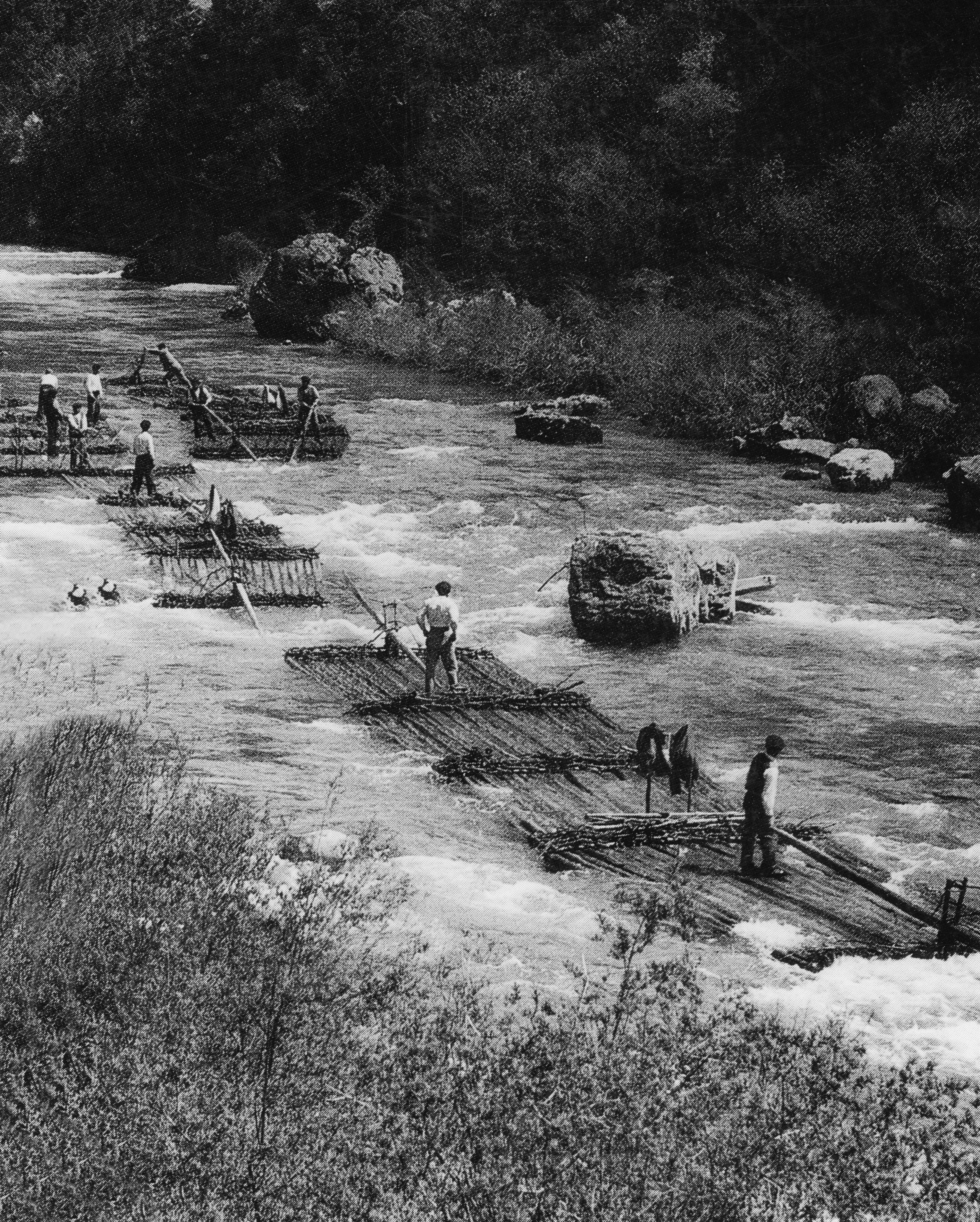Archives
Livestock farming and timber production stand as the primary sources of income in the Pyrenees. The extensive forests are indeed a major natural resource, and noteworthy among these are the lower woodlands of Quinto Real, Irati and Belagoa-Belabarze in the extreme west. Beeches of considerable height can be found in this area. It is therefore not surprising that their timber and its commercialisation remained a thriving business until very recent times. The wealth of the forests allowed for the development of a new trade within the community of Navarrese mountain peoples: the rafter. A raft made out of tree trunks and drifted down a river was known as almadía in Navarre. Timber rafting was a means of transporting logs from the above-mentioned Pyrenean woods to different destinations including the main nearest shipyards of Catalonia. It should be noted that the ancient royal roads in the high mountains were hardly accessible to carriages or galleys, and log transportation along watercourses proved much quicker and easier. According to Balcells, the first documented references to timber rafting on Navarre rivers date from the 14th century. In the early days the floating platforms were said to be commanded by raftsmen from Aragon, and it was not until the middle of the 17th century that exploitation of forests was taken over by local timbermen. (more…)


